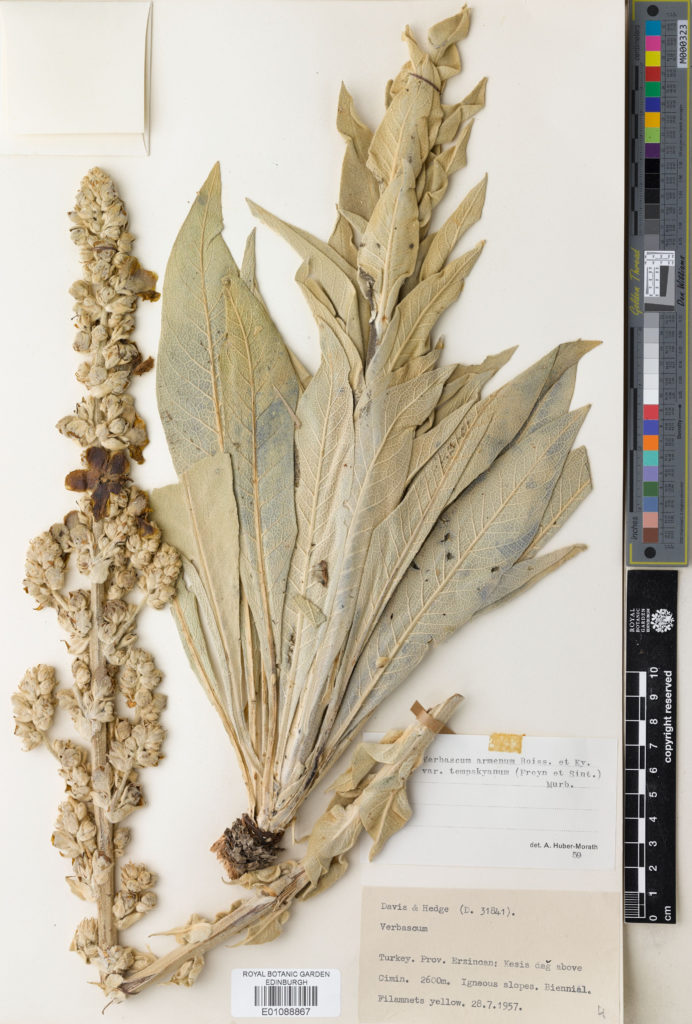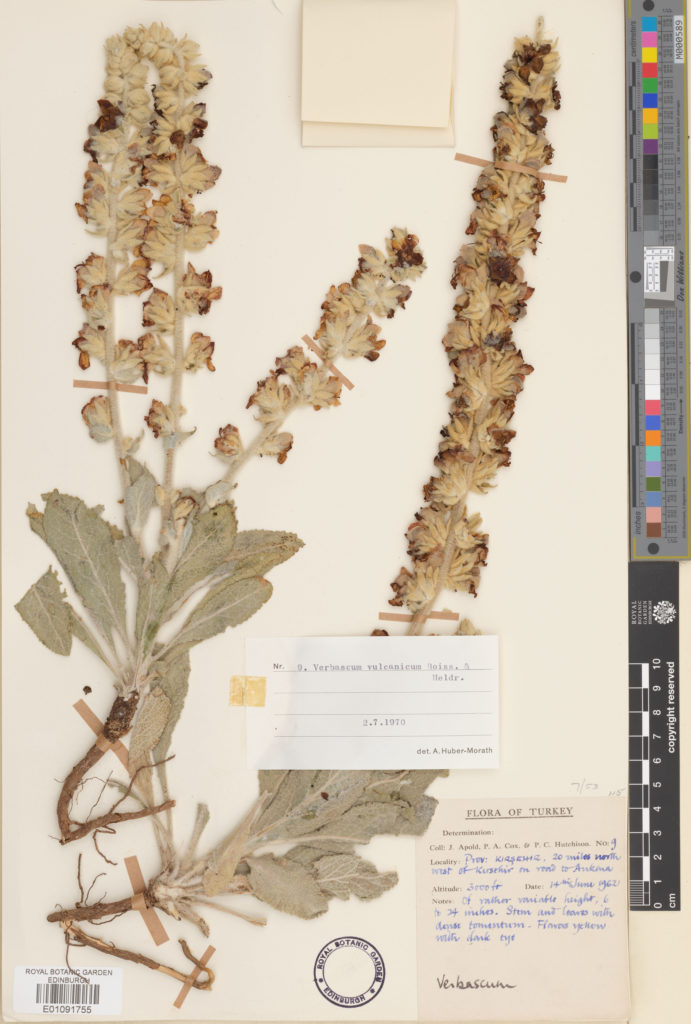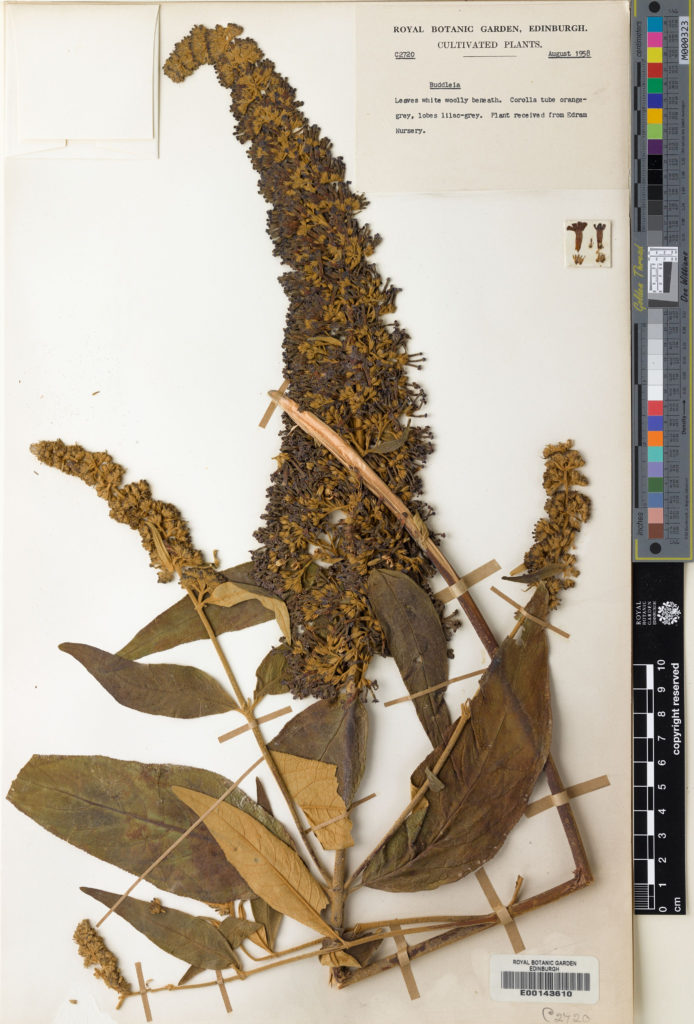The following blog was written by Becky Camfield a digitiser in the Herbarium.
Since 2021 we have increased our digitisation capacity with the goal of getting to 1 million specimens imaged by Autumn 2024. Each digitiser is assigned a family of plants to work through. This series of blogs will spotlight the families that have been completed by a member of the team.
Scrophulariaceae, commonly known as the figwort family can be found worldwide with approximately 60 genera mostly consisting of herbs and shrubs. Some well-known members are Verbascum with their tall spires of flowers and Buddleja known as butterfly bushes, both of which are heavily cultivated in gardens.
Historically it was a much larger family but phylogenetic studies have led to the relocation of many genera. This includes Antirrhinum (snap dragons), Digitalis (foxgloves) and Veronica which are all now in Plantaginaceae and the creation of Paulowiniaceae, Calceolariaceae, Stillbaceae and Orobanchaceae. Although the Lamiales in general is still under constant flux, so more genera may leave or enter the family.
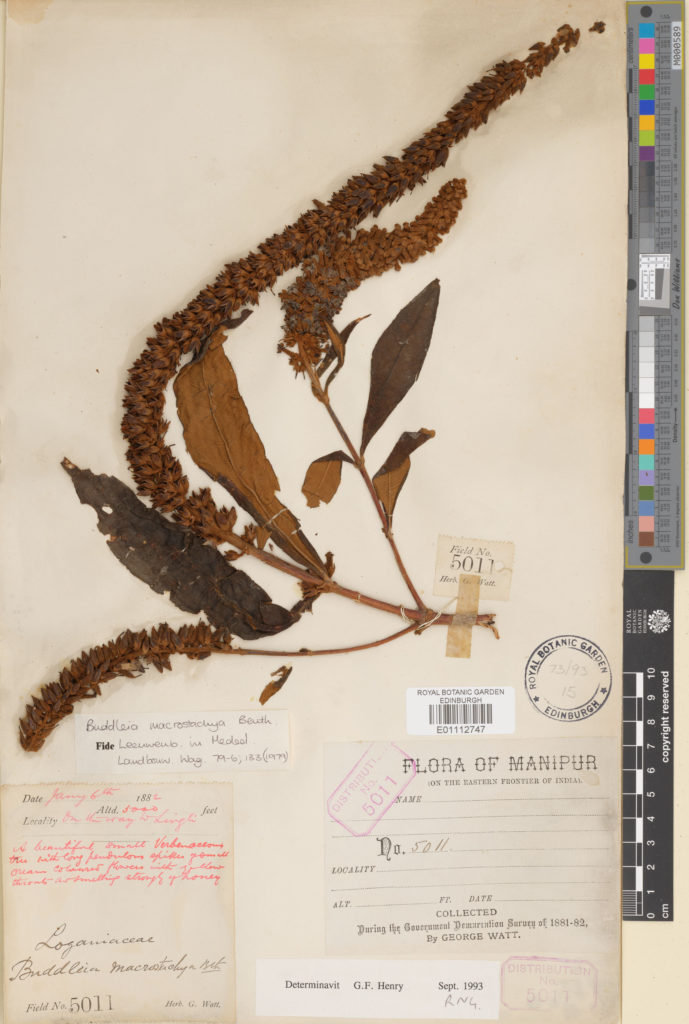
Our Collections at Edinburgh
Prior to the complete digitsation of the Scrophulariaceae we had a record for 3,303 specimens. After the complete digitisation of the family we now have records for 12,226 specimens. We currently hold 528 type specimens for taxa in the Scrophulariaceae.
Specimens of Scrophulariaceae can be searched on our online catalogue.
Top 5 regions
| No. of Specimens | Herbarium Filing region |
|---|---|
| 4,122 | South Africa |
| 2,174 | West Asia & Egypt |
| 1,405 | Europe |
| 792 | Cultivated |
| 592 | Inner China, Korea and Taiwan |
South Africa was heavily worked on by Olive Hilliard which is why a third of our collections are from this part of the world. Our collections do not have a good representation of the family from the rest of Africa along with Russia, Mongolia and North America.
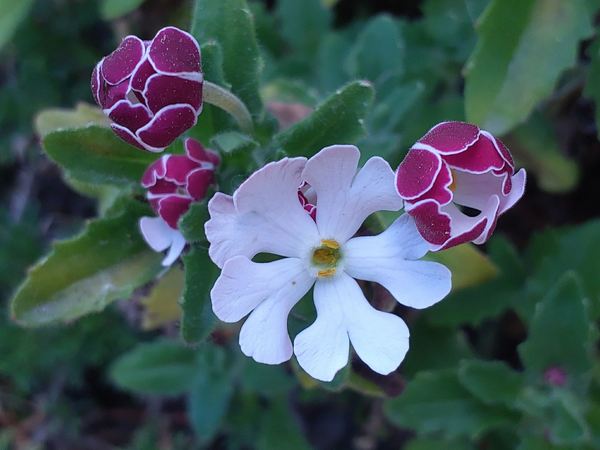
Top 5 Genera
| No. of Specimens | Genus |
|---|---|
| 2,697 | Scrophularia |
| 2,613 | Verbascum |
| 1,727 | Buddleja |
| 675 | Selago |
| 509 | Zaluzianskya |
